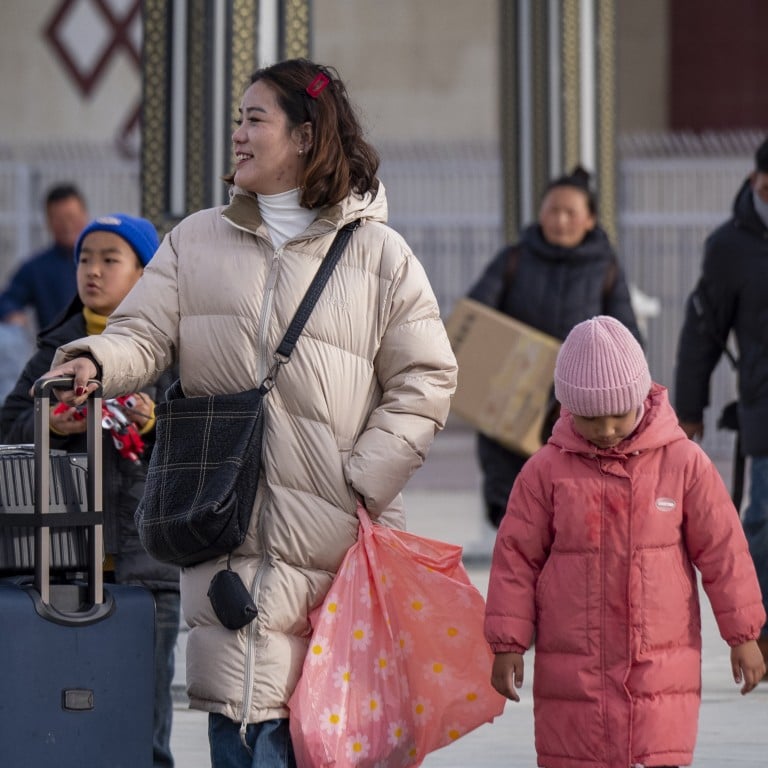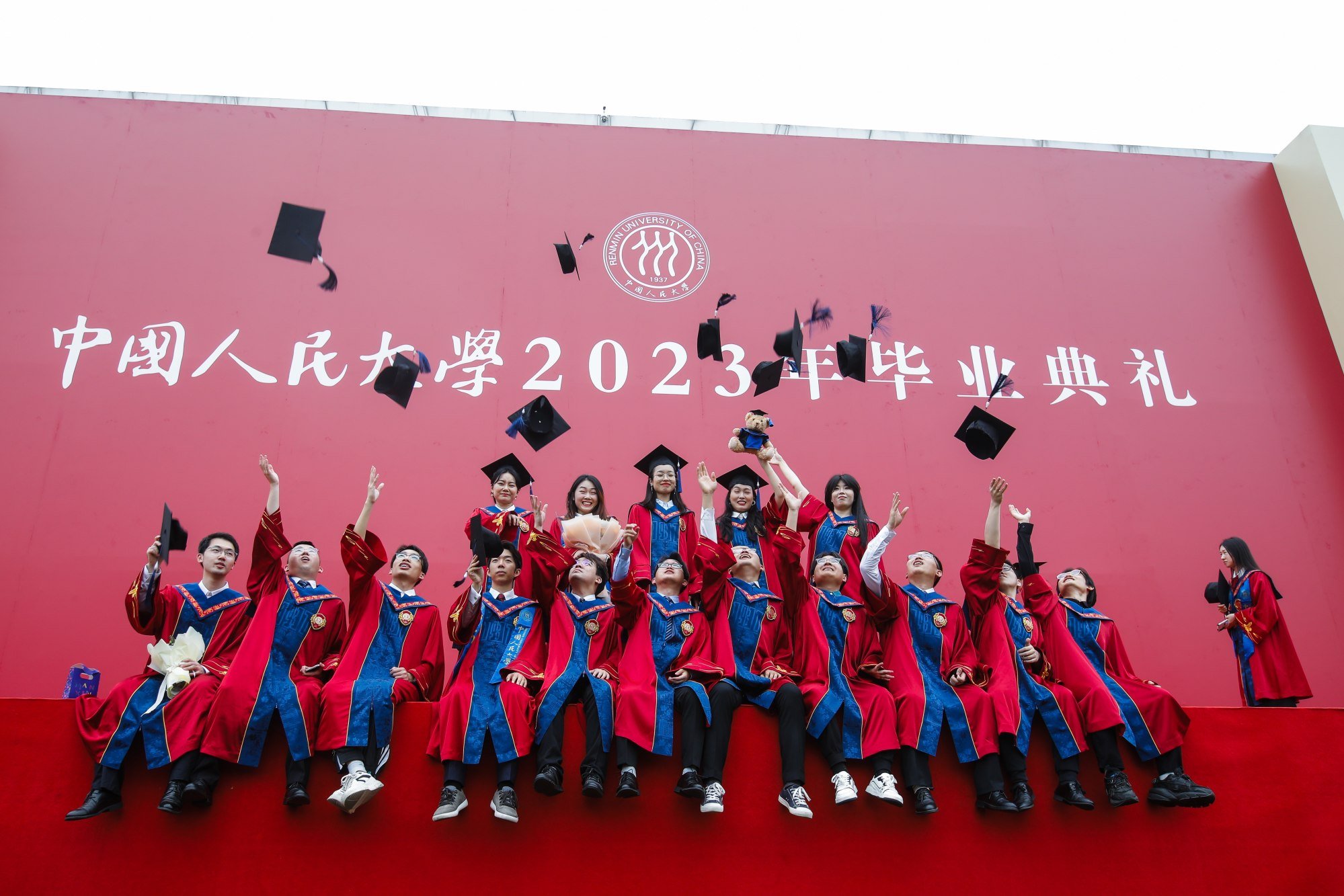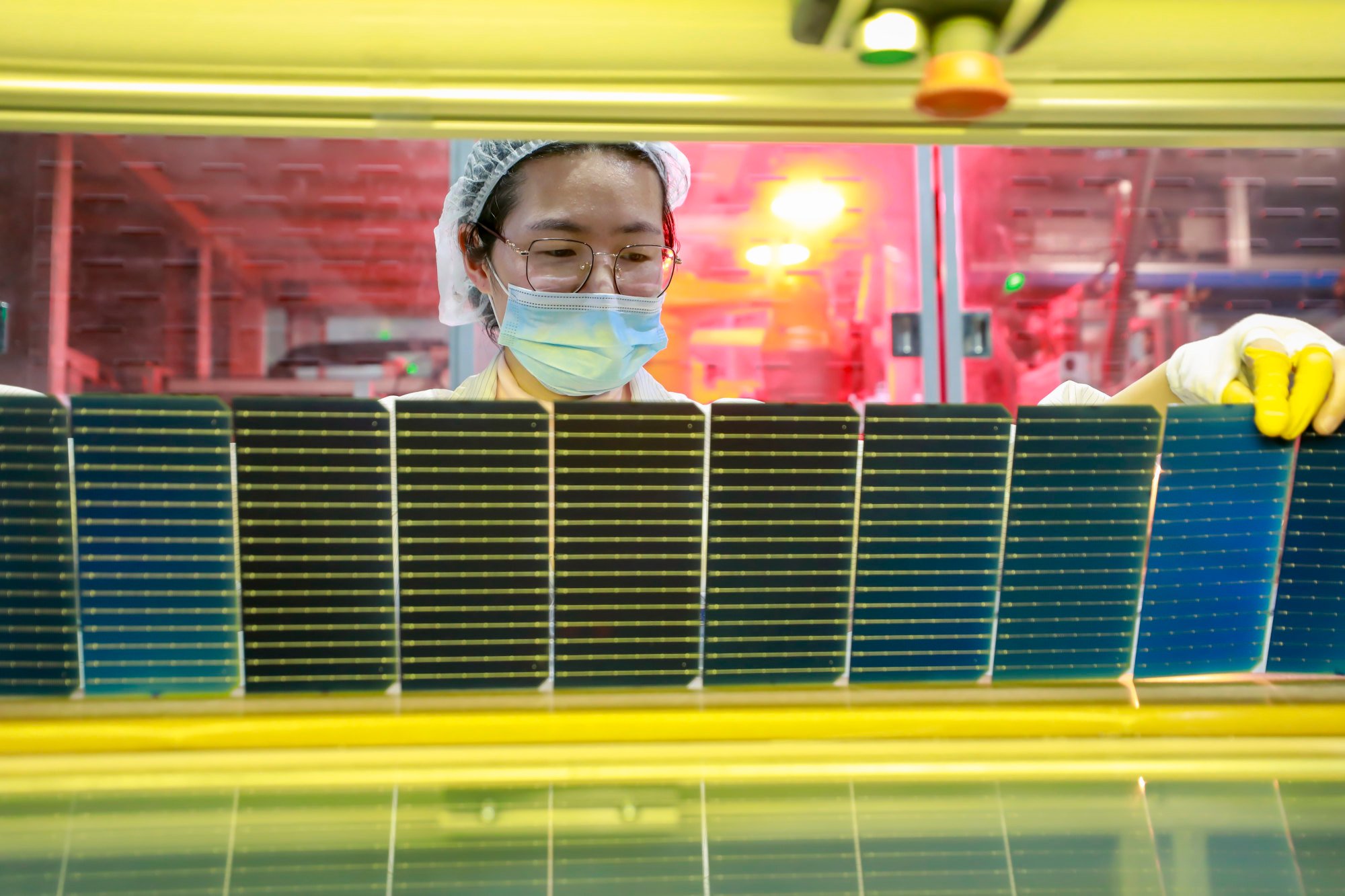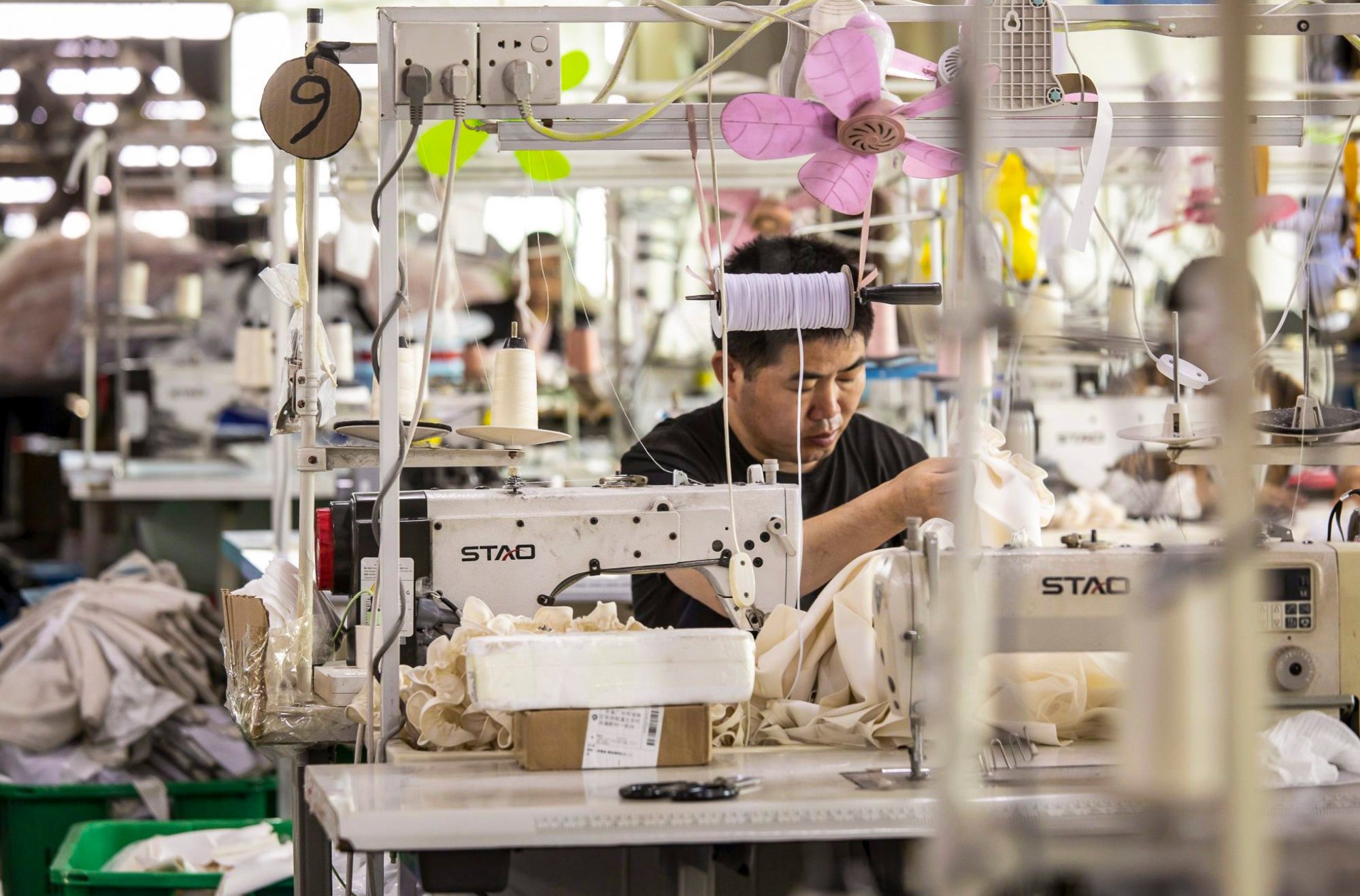
Global Impact: China’s economic, demographic dilemma for 2024 as problems continue for the world’s second-largest economy
- Global Impact is a weekly curated newsletter featuring a news topic originating in China with a significant macro impact for our newsreaders around the world
- In this issue, we break down China’s most recent economic and demographic data, and looks ahead to what 2024 might hold for the world’s second-largest economy
China is facing an unprecedented challenge to sustain robust and sustained economic growth this year.
They also said China is facing an urgent need to re-establish the bond with the market to increase the public’s sense of gain.
It is, though, not all doom and gloom, and there are still bright spots for China’s economy.
Electric vehicles, solar power and lithium batteries have emerged as new engines for growth and exports, but it will still take time for them to replace the property sector as the pillar of the economy.
Apart from short-term growth challenges, China is also under pressure to counter its deepening demographic challenges, with a shrinking workforce and fast-ageing society set to dampen the long-term growth prospects.
The nation has further increased its use of industrial robotics to offset a labour shortage and contend with rising labour costs, and the progress has come after China installed half of the world’s industrial robotics in 2022.
Beijing has introduced a series of measures in recent years to boost births and reverse the ageing trend, with the overall population set to see further decline in the coming years, but subsequent effects have been limited.
Demographers have said China needs to foster a more supportive and consistent system for childbearing.
So, with short- and long-term challenges, 2024 looks to be a busy and challenging year for Chinese officials and policymakers as they endeavour to get 2025 off on a more joyful footing.
60-Second Catch-up
Deep dives

‘Dare not spend’: China seeks fix as slowing economy may shrink middle class
-
China’s crucial middle class, an oft-cited group of 400 million, may shrink in the absence of a strong economic recovery
-
Beijing sees the group as crucial for economic growth and social stability, and to counter external challenges, amid the bumpy post-Covid recovery
For China’s middle class, things have never looked harder as they reflected on 2023 and peered ahead to the second year of what should be a post-pandemic economic recovery in 2024.
No signs have yet emerged to upend their frustration as the property market meltdown and free-falling stock market have continued to wipe out their wealth.

China’s three-legged race to fend off the 4 D’s of an economic apocalypse
-
The dangers of debt, deflation, de-risking and demographics are at China’s doorstep, threatening growth in its US$17.67 trillion economy
-
A property crisis, chilled consumption, weak momentum and a broad lack of confidence in the economic outlook do not bode well for a return to normality in 2024
China’s 5.2 per cent rise in gross domestic product (GDP) last year, despite beating its annual target and still well outpacing growth in developed Western countries, has yet to convince the market that all is well in the world’s second-largest economy, according to observers.
And the race is on as policymakers grapple with the ramifications of four distressing “D’s” – debt, deflation, de-risking and demographics – that continue to bog down the 126-trillion-yuan (US$17.67 trillion) economy at the starting blocks of 2024.

How are China’s young graduates and universities coping with high unemployment?
-
A Post review of two dozen annual reports by Chinese universities offers insight into the current state of youth joblessness as official figures resume after nearly a half year
-
Several factors seen weighing on the ability of young adults to find work in China this year, including advances in AI and persistent private-sector woes

China’s hi-tech push faces ‘extraordinary pressures’ as 2023 output stalls
-
Industrial output from hi-tech manufacturers rose by 2.7 per cent year on year in 2023, but this marked the lowest level of growth since records began in 2018
-
Beijing has pinned its hopes on innovation and technology to power the world’s second-largest economy as it seeks to find new growth engines
Output from China’s hi-tech manufacturing sector grew at the slowest pace on record last year amid a faltering economy and ever-escalating containment efforts from the United States, with the decline weighing on Beijing’s march towards superpower status.
Industrial output from hi-tech manufacturers rose by 2.7 per cent year on year in 2023, falling behind an increase of 5 per cent from the overall manufacturing industry, marking the lowest level of growth since the National Bureau of Statistics started to release the figures in 2018.

China’s economic malaise, stock slump raises alarms: ‘Where do we go from here?’
-
As markets tank, investors and the Chinese public are pining for concrete actions and stimulus measures from Beijing that haven’t come
-
Some analysts suggest that stock market fixes may not be as important as ensuring social stability, but worries are rising that shocks could force Beijing’s hand
Beijing’s response to what has been a worrisome raft of economic headwinds – including a widely watched stock market slump that has slammed investor confidence – highlights what analysts say is a failure to manage market expectations at a time when doing so is a critical step toward getting China’s economy back on solid footing.
To stem the tide of negative sentiment and ward off financial peril, observers warn that Chinese leadership is being hard-pressed to change tactics by employing substantial stimulus measures or more impactful policy reforms.

China claims ‘biggest corruption in statistical sphere’ amid fake data crackdown
-
China’s push against data fabrication has been ‘greatly strengthened’ after the practice was added to the Communist Party’s disciplinary regulations last month
-
Severely harmful fraudulent statistics ‘damages the credibility of the party and government’, according to the statistics bureau
China has sent one of its strongest warnings against falsifying data, calling the practice “the biggest corruption in the statistical sphere” after it became a violation of Communist Party discipline.
Data fabrication was written into a revision of the party’s disciplinary regulations last month, which “greatly strengthened” the constraints to prevent and curb statistical fraud, the National Bureau of Statistics (NBS) said on Monday.

China’s Guangdong to ‘shoulder major responsibility’ to aid economic growth
-
Guangdong will ‘pace up construction’ of China’s Greater Bay Area plan in 2024, having set an economic growth target of 5 per cent
-
Beijing has pinned its hopes on provinces including Guangdong and Zhejiang to play a bigger role in driving up economic growth
China’s southern powerhouse of Guangdong province has pledged to exhaust all efforts to boost the Greater Bay Area as a top priority in 2024, as it seeks to shoulder a greater role for economic growth.
Governor Wang Weizhong also told a provincial parliament meeting on Tuesday that Guangdong would aim to grow its economy by 5 per cent this year, putting it in the lower band of the goals set by other regional powerhouses.

China’s debt-ridden provinces set conservative 2024 GDP growth targets
-
Northern municipality of Tianjin has set a 4.5 per cent gross domestic product (GDP) growth target for 2024, having reported subpar expansion of 4.3 per cent last year
-
Northeastern backwater of Heilongjiang is targeting 5.5 per cent growth in 2024 amid rising tourism revenues
Some of China’s most indebted regions have set conservative economic growth targets for 2024 after being told to concentrate on defusing the debt bomb, adding to the headwinds that are set to haunt the world’s second-largest economy this year.
The northern municipality of Tianjin, which lies 100km (62 miles) east of Beijing, announced a 4.5 per cent gross domestic product (GDP) growth goal on Tuesday, after reporting subpar expansion of 4.3 per cent year on year for 2023.

Despite China’s debt and population woes, top cities aim for over 5% GDP growth
-
China’s economy grew by 5.2 per cent year on year in 2023, and some of its leading cities have already signalled their intentions for the year ahead
-
Nanjing, the capital city of Jiangsu province, and Guangzhou, the capital of Guangdong province, have fixed their 2024 growth targets at above 5 per cent
At least five of China’s top urban economies have set their 2024 growth targets at above 5 per cent, even as questions persist over Beijing’s ability to handle an ongoing property slump, a mounting debt burden, a declining population and external headwinds.

With Lunar New Year boon a stopgap, China’s economy has other 2024 priorities
-
A record high 9 billion trips are expected to be made within China during the annual 40-day ‘chun yun’ travel period, which starts on Friday
-
But economists say China needs to focus on solving its ongoing property market crisis and helping private firms to ensure economic growth in 2024
From Friday, billions of Chinese are expected to join the world’s largest human migration, which is set to be the biggest ever as China embraces the first Lunar New Year free from the shackles of the coronavirus.
A record high 9 billion trips are expected to be made within China during the annual 40-day chun yun travel period, the Ministry of Transport said last week, with family reunions, sightseeing and leisure activities on the agenda.

‘Robust rebound’ for China’s luxury goods market, but post-Covid doubts remain
-
China’s luxury goods market recorded 12 per cent year-on-year growth in 2023, according to Bain & Company, bouncing back from 10 per cent decline a year earlier
-
Challenges posed by the recovery of consumer confidence and the evolution of overseas luxury shopping remain, even with China still seen as a leading luxury market
China’s luxury goods market enjoyed a “robust rebound” last year, but a challenging economic climate and increased overseas shopping limited its recovery, according to a new report from a global consulting firm.
The sector recorded 12 per cent year-on-year growth in 2023, Bain & Company said on Wednesday, following a 10 per cent decline a year earlier.
Global Impact is a weekly curated newsletter featuring a news topic originating in China with a significant macro impact for our newsreaders around the world.



